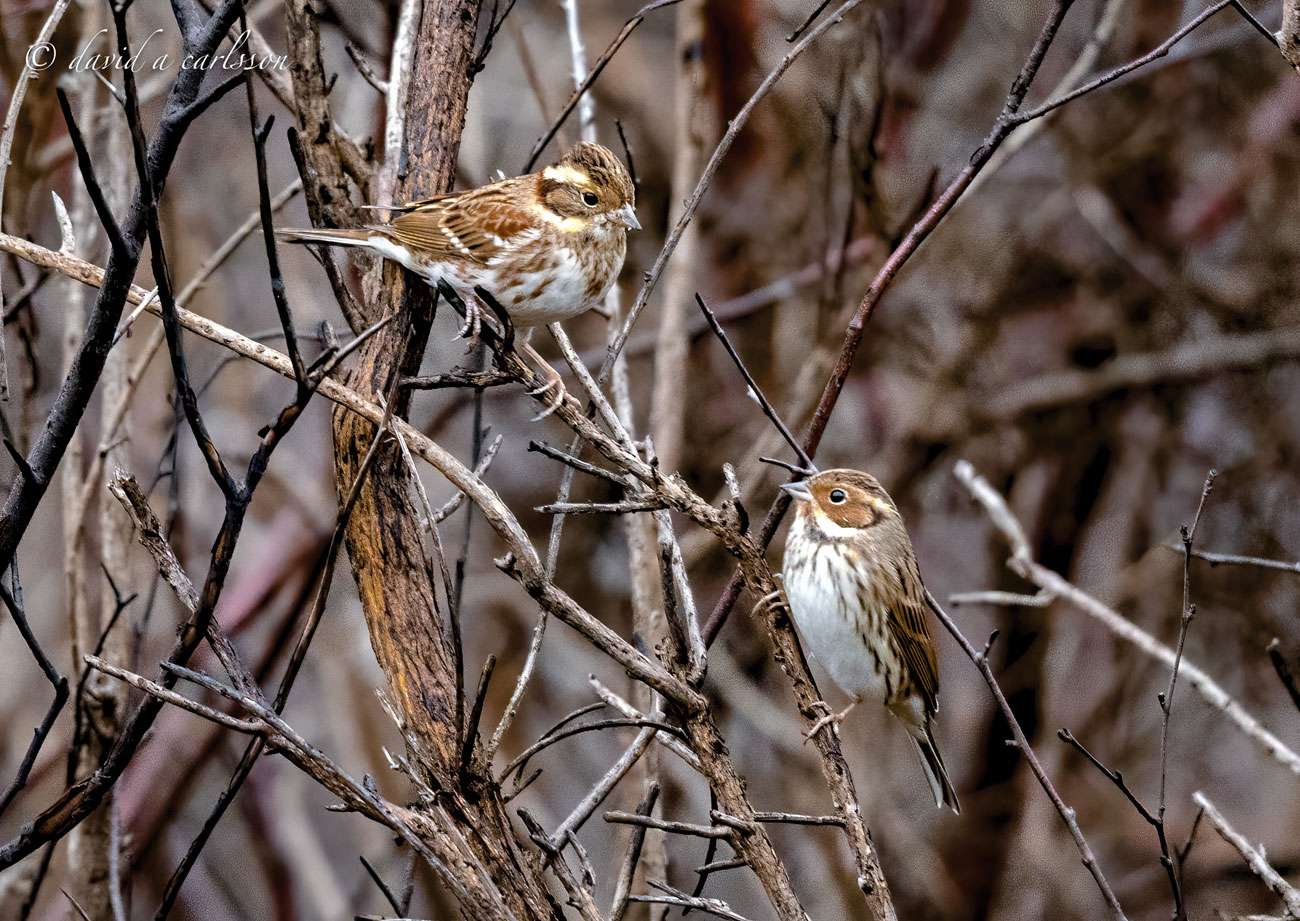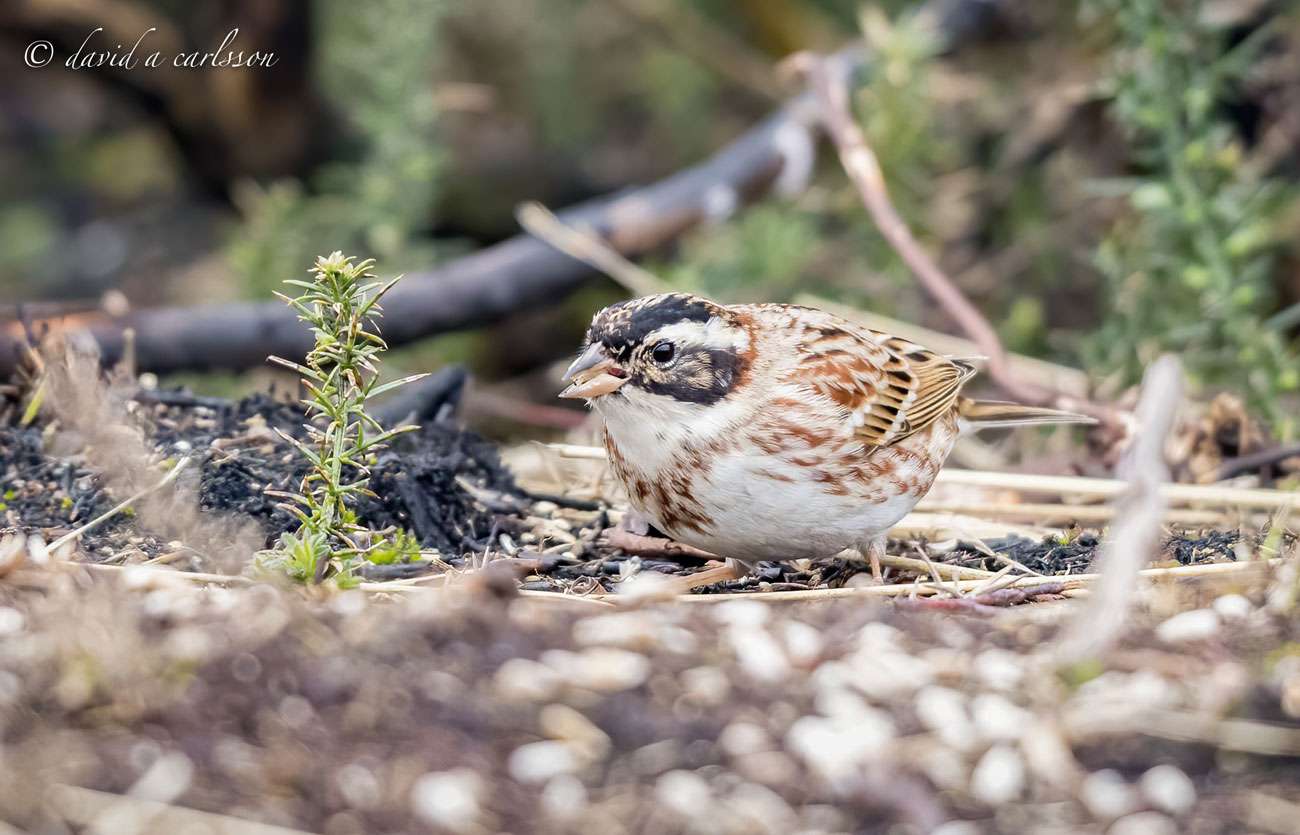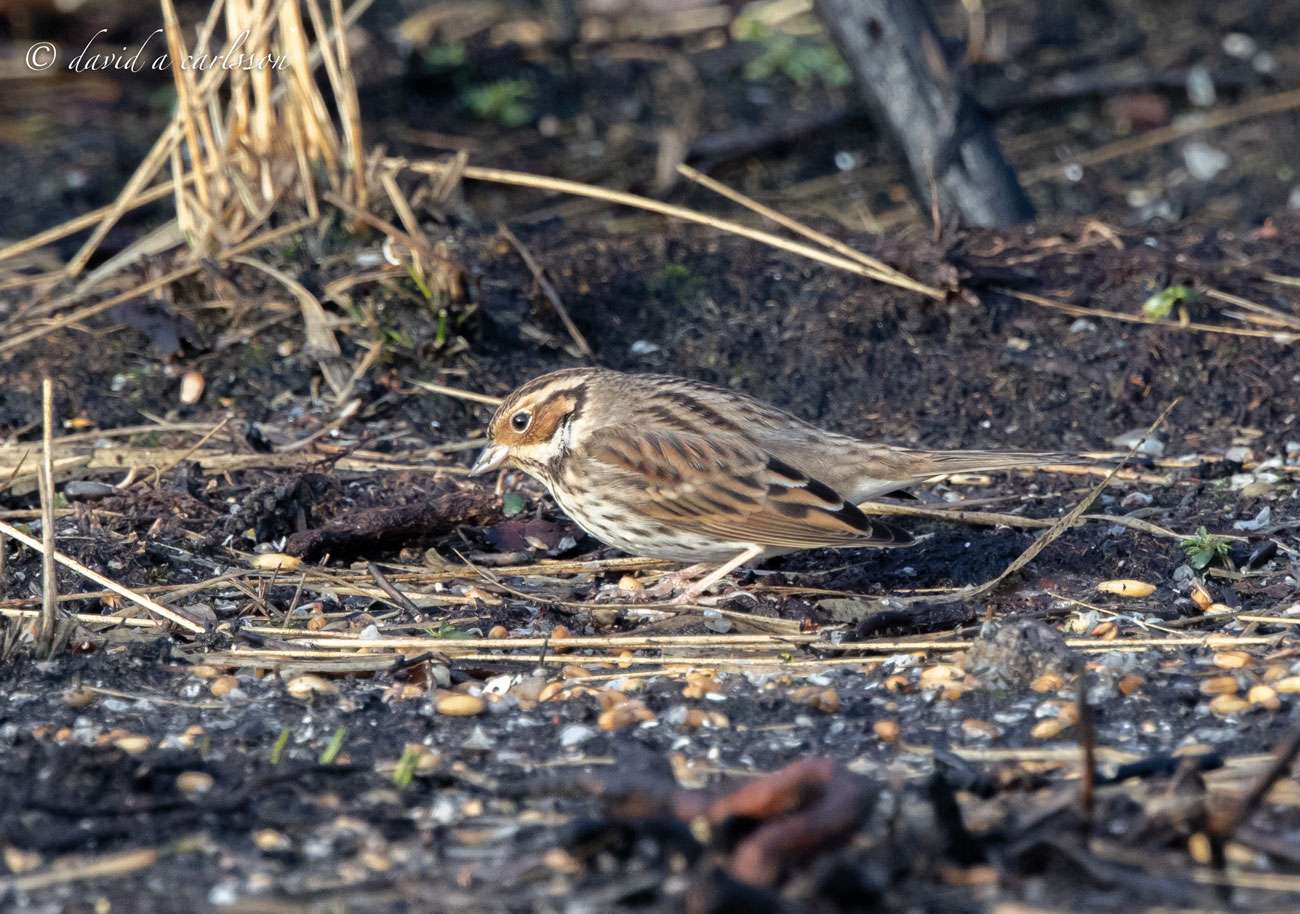
‘Fancy meeting you here!’ Rustic Bunting and Little Bunting – in the same Surrey bush, Photo by David Carlsson
Have you ever been somewhere hundreds or thousands of miles from home and then got the shock of your life when you unexpectedly bumped into someone you knew?
It happened to me once while hitchhiking upcountry in Kenya. I got a lift from my former English teacher.
We only realised it was one another after I clocked the ID on the collar of his dog who was sitting in the back with me: ‘Max – phone Ottershaw (something like) 3220.’ It was the very same friendly canine who had accompanied his master to my lessons. Strange, but true.
So imagine – if you will – how two rare birds to the UK might have felt when they clapped eyes on one another in Surrey sometime back in November last year.
Talk about way off course. They should have been in south-east Asia by then. Yet here they were, a Rustic Bunting and a Little Bunting, not only in our landlocked county but in our own borough of Waverley. And amazingly in the very same bush – as Guildford bird photographer Dave Carlsson’s brilliant main picture here shows.
These are birds I have seen as short stay Autumn visitors to places like Fair Isle or the Isles of Scilly. Inland records of either are rare. So to have both turn up at once was headline news for birdwatchers.
Occasionally odd things happen in the birding world and that has kept generations of birders on the look-out. What you thought was impossible or highly unlikely proves you wrong.

Rustic Bunting – Photo by David Carlsson
These two were soon fuelled and persuaded to stay around by a supplementary diet of seeds scattered by well-wishers. They kept close company, as have many visitors to foreign lands, and allowed hundreds of observers to enjoy their first experience of these species.
Their choice area over many months alongside one another soon became known as ‘bunting bushes’ out on the marshy wild landscape of Ockley Common, near
Thursley.
This Site of Special Scientific Interest (SSSI) was no doubt the nearest thing these birds could find that resembled their taiga breeding grounds in north-east Europe. Perhaps a mishap in the birds’ internal navigation system, or rogue weather, had sent them off course from where they were meant to be.
The first to be found, by my well-chuffed birding friend Ed Stubbs, was Surrey’s eighth Little Bunting on 19
October. This attracted widespread interest.
As people went to look for it on 27 November, the first-winter male Rustic Bunting – only the county’s second record – was discovered by an even more chuffed Surrey Bird Club mate of mine, Dave Brassington. There was now national interest.
Things then got more surprising still on Christmas Eve when a second Little Bunting was found. They often all hung out together. But winter weather, workload issues and lockdown considerations all combined to dissuade me from attempting to find them.
Of course, it also helped that I’d seen both species previously – and together – at Beddington Sewage Farm in 1993. Nobody who saw them back then dreamed that experience would ever be repeated.

Little Bunting – Photo by David Carlsson
But with this year’s summer birds arriving and a hot day in the offing on our third lockdown release day, 29 March, I could hold out no longer and made an afternoon trip to ‘bunting bushes’. The terrain was showing encouraging signs of recovery from last year’s devastating heath fire.
I waited and searched through a succession of vaguely similar but larger birds than my targets. These local Reed Buntings were cashing in on the free breakfast, lunch and tea service put out for our ‘guests’.
Things looked up when both Little Buntings breezed into some gorse bushes an hour and a quarter later and gradually made their way to a line of seed. But there was no sign of the slightly bigger Rustic Bunting seen earlier that morning.
Some would-be observers from further afield sauntered off dejectedly. I stayed on with six others and we all remarked that with the bird having built up its fat reserves, and this being the warmest day of the year, perhaps it had decided to finally try and begin its reorientation.
We hung on though just in case it hadn’t. Just as well. Eventually after nearly three hours the Rustic, now in a much brighter rusty plumage than when it was a youngster, showed itself by popping up in a nearby silver birch.
My visit turned out to be good timing or, as some kindly suggested, fair reward for playing it cool. For next day there was negative news and people looked for hours daily thereafter for more than a week. It was never seen again although as I write this its bunting brothers are still present.
Let’s hope the trios’ ‘clocks’ don’t urge them all to make a wasted trip to China instead of breeding as they should be, somewhere much nearer like Finland or Russia.
Twitter – @Crane_Spotter
Click here to see all of Robin Stride’s previous Crane Spotters.











